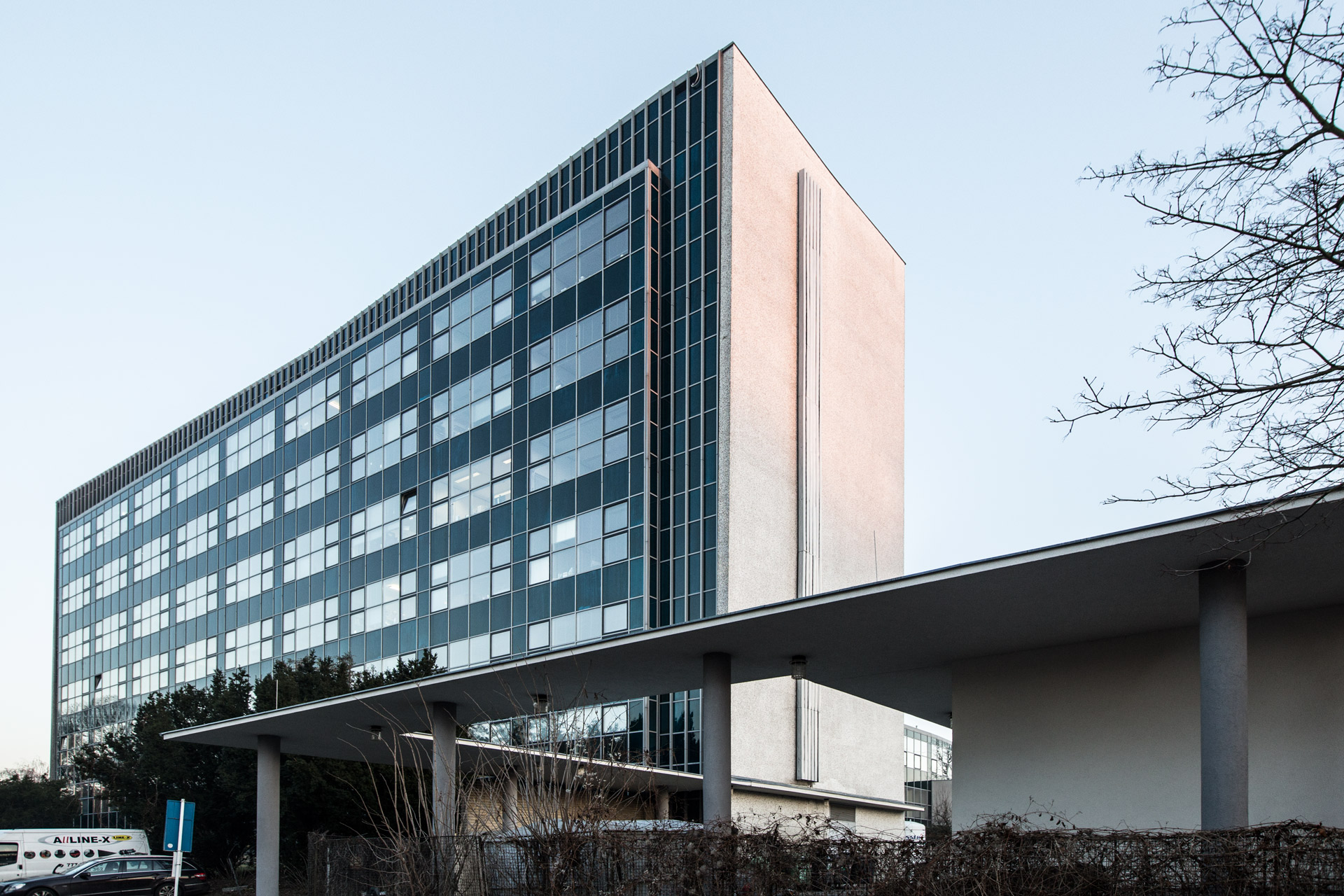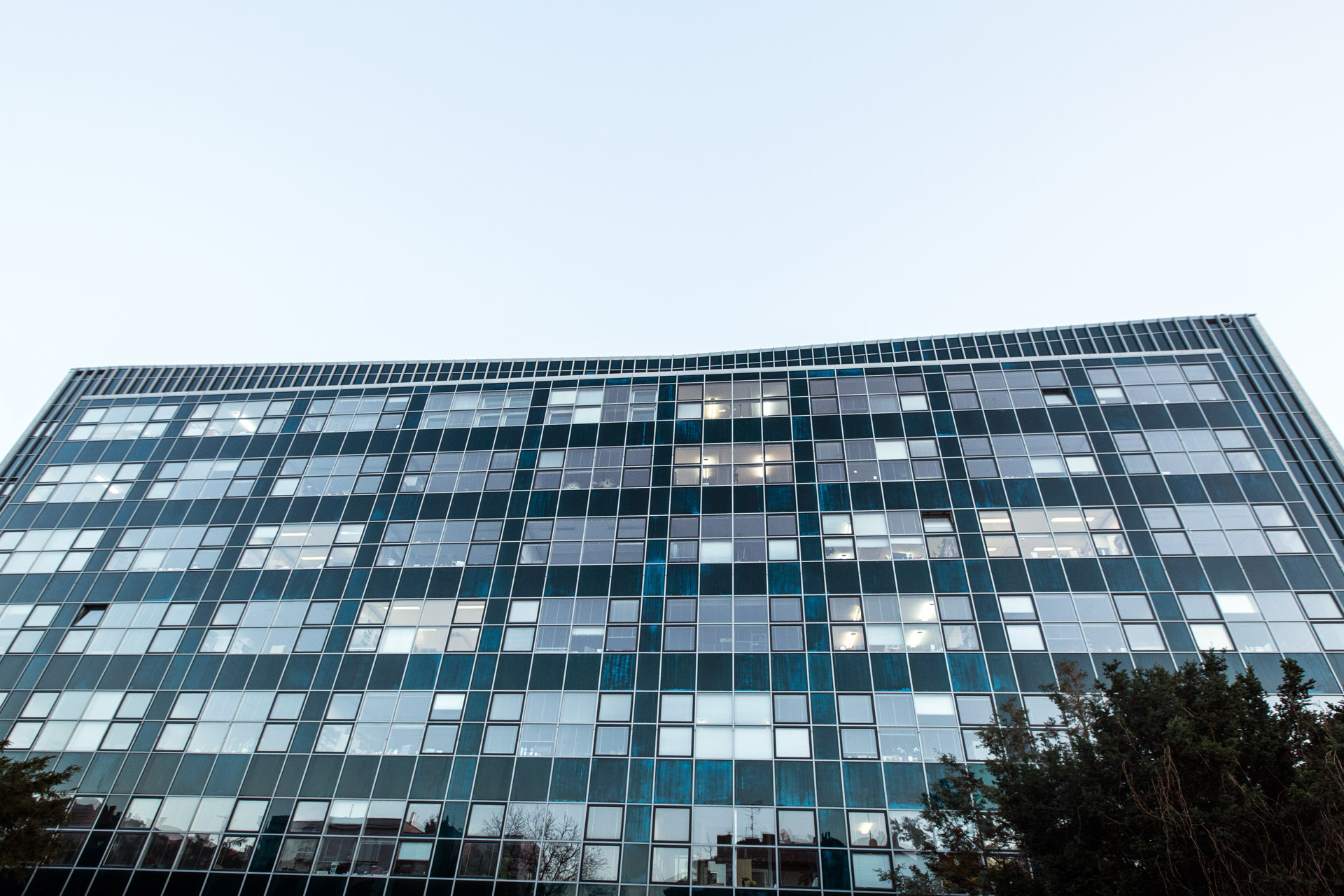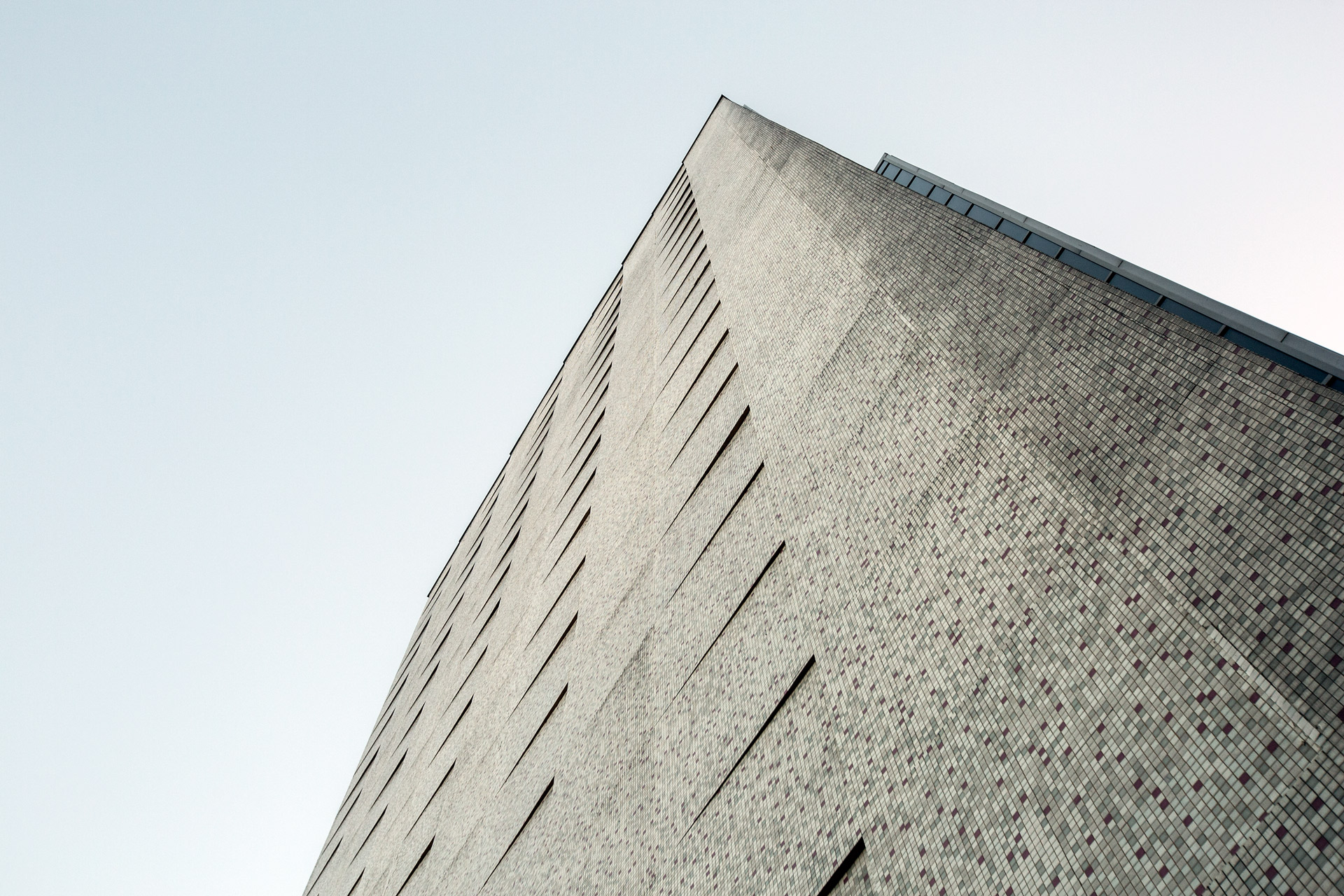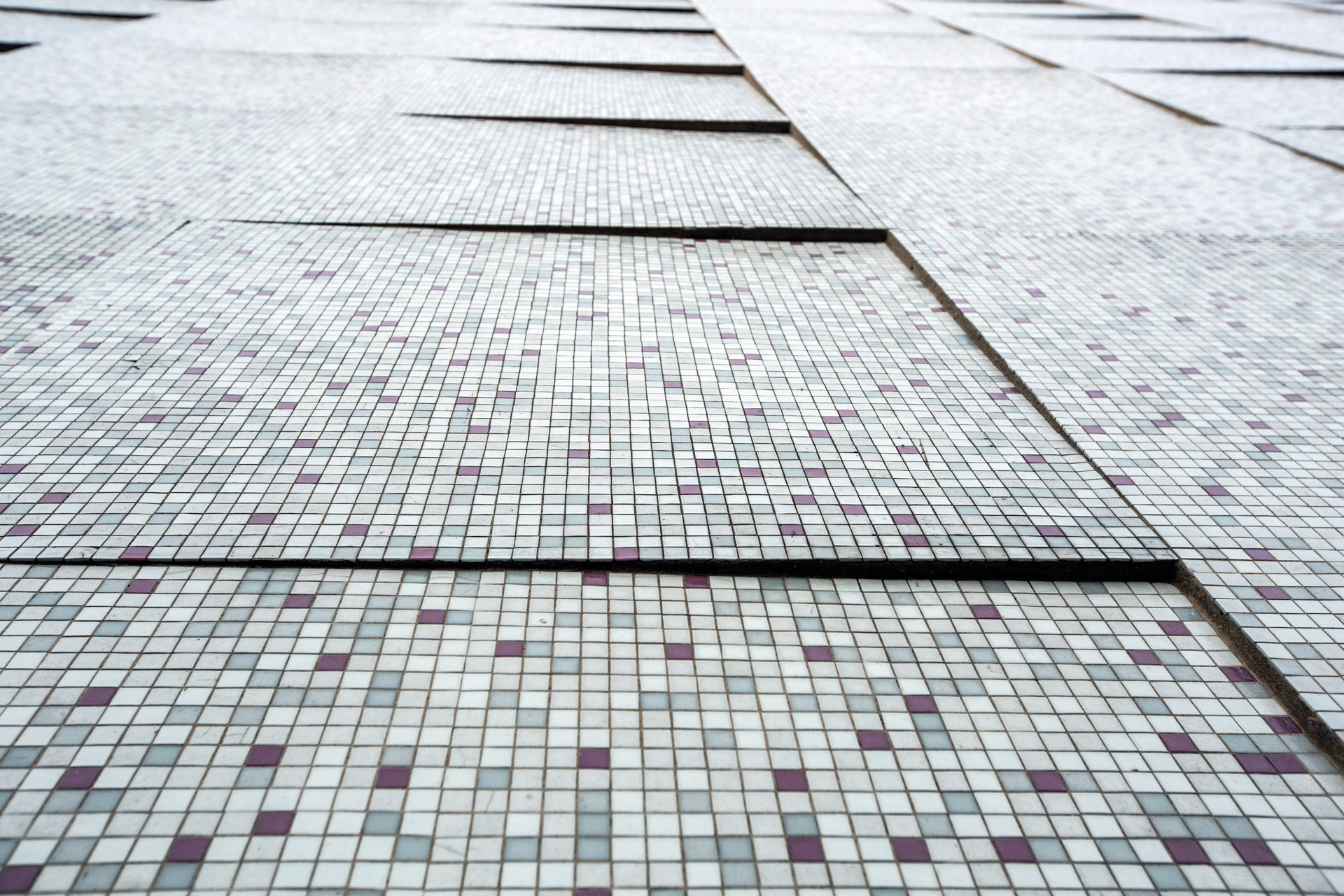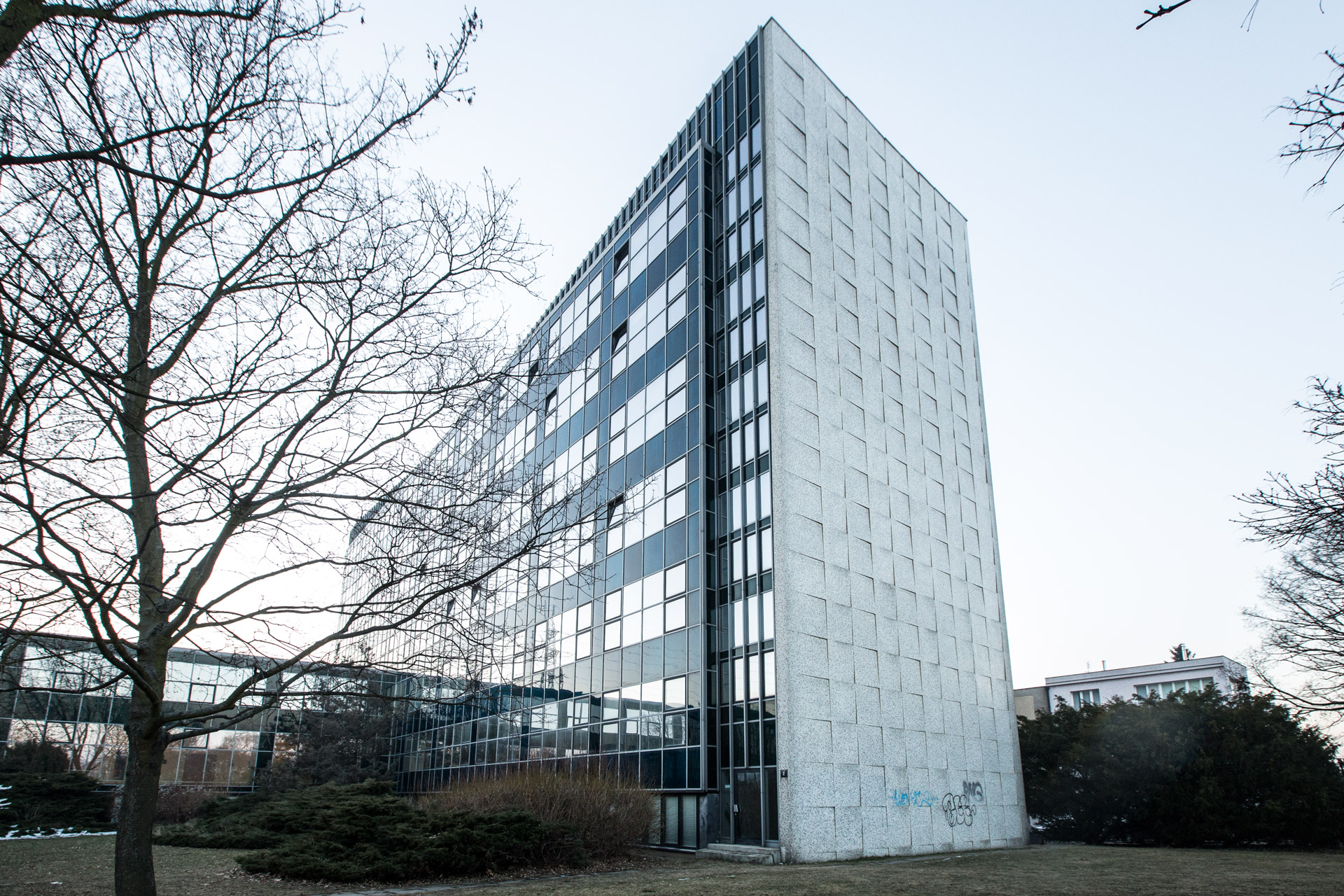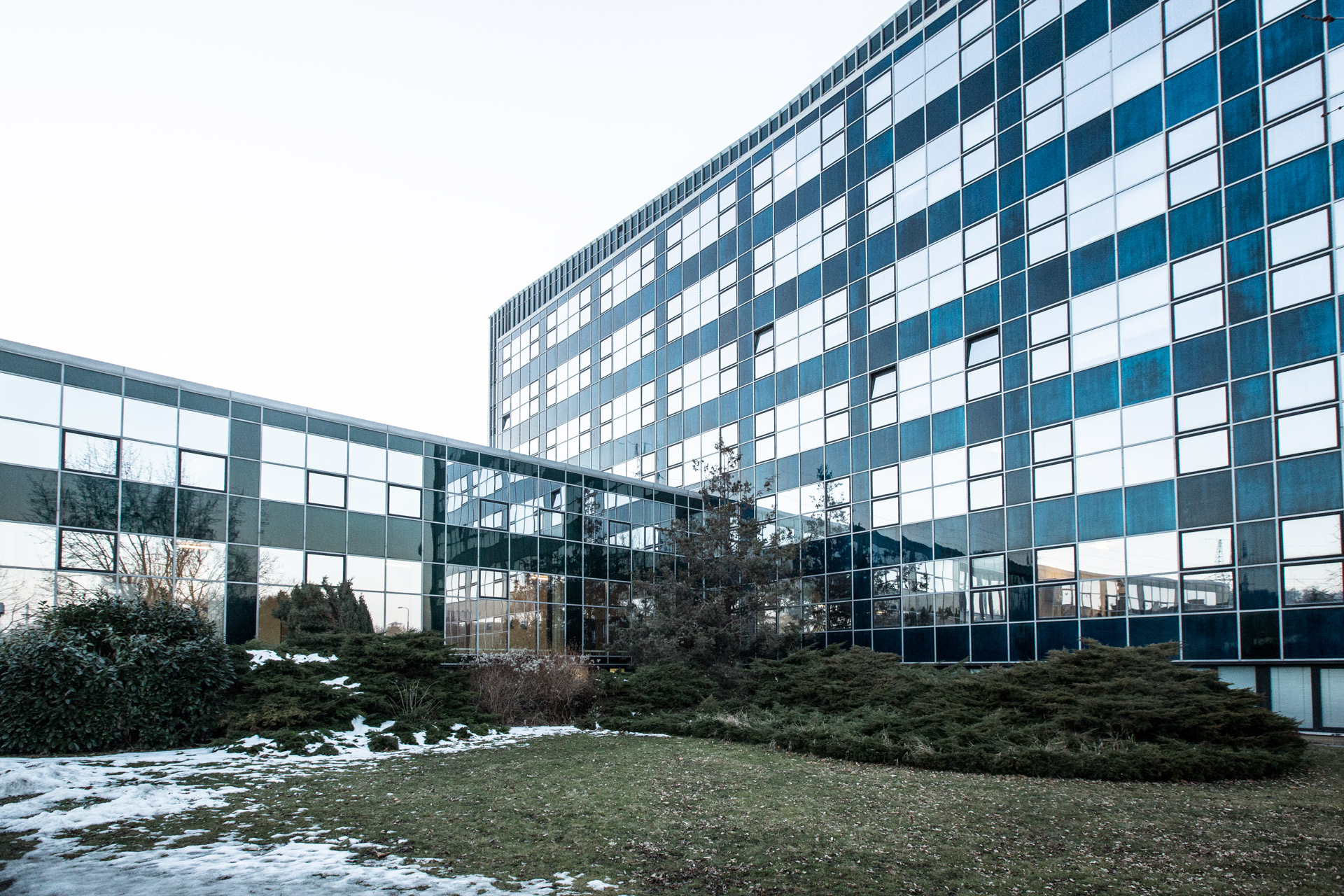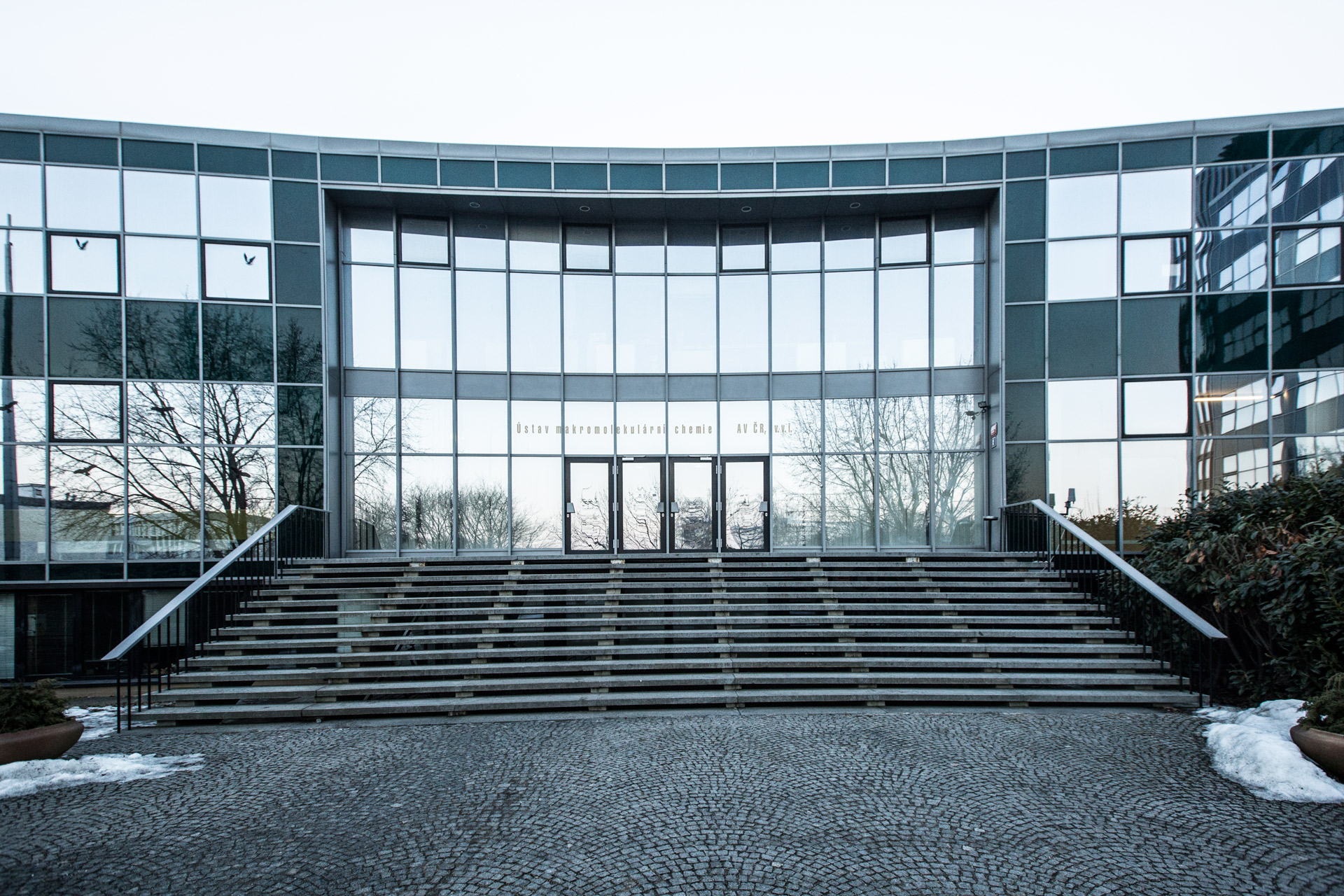ÚSTAV MAKROMOLEKULÁRNÍ CHEMIE AKADEMIE VĚD ČR
Karel Prager
1958 - 1965
Heyrovského náměstí 1888/2
Foto: Daniela Šrámková
Autor textu: Pavlína Karbanová Krásná
Překlad: Petr Danda
Stavba, která se již během svého vzniku stala významným mezníkem ve vývoji československé architektury. Karel Prager motivován touhou technologicky se vyrovnat západním trendům vyvinul tzv. boletické panely, tedy systém závěsové fasády, který do té doby nebyl v Československu dostupný. Poprvé zde byla použita kompozice nízkopodlažní budovy v kontrastu s přisazenou vysokou deskou, poprvé zde Prager použil svůj stavební systém dílců GAMA (montované typizované skříňové příčky). Vypráví se historka o tom, že barevného smaragdového nádechu skleněného pláště dosahovali skláři v Boleticích přimícháním mouky do sklářské hmoty. Panely nedlouho po dokončení stavby začaly praskat, skláři obvinili Pragera, protože prý byly nuceni přistoupit na tento netradiční technologický postup. Ten přizval k expertnímu posudku Ottu Wichterle, který dokázal, že na vině jsou skláři, kteří urychlením tuhnutí skla praskání zavinili.
The Institute of Macromolecular Chemistry is a building, that, already in its construction phase, became an important milestone in Czechoslovak architecture. Motivated by his desire to technologically catch up with western trends, architect Karel Prager developed a special curtain wall system called “Boletice panel”. Previously, curtain wall systems were not available in the country. It was also the first time Prager applied his famous composition of contrasting a low-rise building with a high-rise tower. Furthermore, it was the first project where he used his “GAMA parts construction system”, a standardized system for assembled partitions. It is said that, in order to obtain the emerald blue finish of the panels, the glass makers in Boletice used to mix flour into the glass. Not long after the completion of construction, the glass panels started to crack and the glass makers accused Prager of this, arguing they have been forced to use this unconventional technological process. But Prager invited Otto Wichterle, a prominent Czechoslovak scientist, to conduct an expert study, which proved, that the glass makers were to blame, who, by accelerating the glass solidification process, caused the panels to crack.
